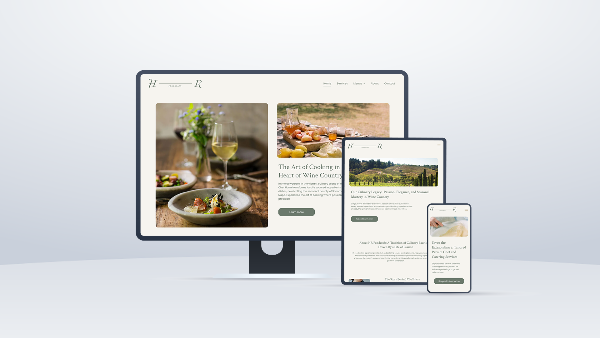Advanced Web Optimization: Tools and Metrics for Success
Web performance optimization ensures that websites deliver fast, efficient access to content, significantly enhancing the overall user experience. A slow-loading site often drives users away, dramatically affecting engagement and conversion rates. Research shows that every additional second of load time can lead to a 4.42% drop in conversions, underscoring the importance of speed in retaining visitors and driving success.
Google emphasizes website speed as the third most critical SEO ranking factor, following content quality and backlinks. Fast-loading websites reduce bounce rates and improve customer satisfaction, with mobile users particularly sensitive to delays. Even a one-second lag can decrease conversions by 20%. Businesses that prioritize performance optimization often achieve higher customer loyalty and enhanced brand perception.
Beyond PageSpeed Insights: Tools for Measuring Web Performance
Limitations of PageSpeed Insights
While Google PageSpeed Insights (PSI) is a widely used tool for evaluating web performance, it has its constraints. PSI primarily uses lab data, which may not always reflect real-world experiences. It often lacks detailed guidance on server response times and third-party content impacts, offering limited context for actionable improvements.
Alternative Tools for In-Depth Analysis
To complement PSI, leverage tools like:
- GTmetrix: Offers detailed performance reports and visualization tools.
- WebPageTest: Provides advanced testing scenarios and deep diagnostic capabilities.
- Lighthouse: Embedded in Chrome DevTools, evaluates performance, accessibility, and SEO.
- Chrome User Experience Report (CrUX): Delivers real-world user data.
These tools collectively offer a more comprehensive understanding of your site’s performance and user experience.
Key Web Performance Metrics
Core Web Vitals and Beyond
Key metrics provide insights into areas requiring optimization:
- Largest Contentful Paint (LCP): Measures how quickly the largest visible content loads, impacting first impressions.
- Cumulative Layout Shift (CLS): Tracks visual stability to prevent unexpected shifts during page load.
- Time to First Byte (TTFB): Highlights server responsiveness.
- Bounce Rate & Session Duration: Indicate user engagement and retention.
- First Input Delay (FID): Evaluates interaction responsiveness.
- Speed Index (SI): Shows how quickly content becomes visually complete.
Focusing on these metrics helps businesses maintain a competitive edge in the digital landscape.
Strategies for Optimizing Web Performance
Image Optimization
Images often constitute the largest assets on a webpage. Reducing file sizes and adopting formats like WebP can significantly improve load times. Lazy loading, which delays off-screen image loading, further enhances initial page speed and user experience.
Caching and Minimizing HTTP Requests
Implement browser caching to reduce server load and speed up delivery for repeat visitors. Minimizing HTTP requests by combining files and employing asynchronous loading also streamlines site performance. Advanced caching solutions, such as Redis, can further boost efficiency.
Utilizing a Content Delivery Network (CDN)
CDNs reduce latency by distributing content through servers closer to users. This approach minimizes resource loading times while enhancing security features like DDoS protection and SSL encryption.
Regular Performance Audits and Monitoring
Continuous Auditing for Consistent Performance
Frequent audits ensure websites remain competitive and efficient. Tools like Pingdom provide real-time alerts and historical data to identify and resolve potential issues promptly. Regular monitoring ensures sustained optimization and user satisfaction.
Planning Performance Activities
Develop a performance engineering plan to align metrics with user experiences. Conduct user studies to correlate perceived load times with actual data, and set specific performance goals to measure improvements effectively.
Effective Strategies for Long-Term Web Performance
Best Practices for Sustainable Optimization
Regularly updating your website’s codebase, removing outdated scripts, and auditing for unused JavaScript and CSS files are crucial for long-term improvements. Monitoring third-party scripts and replacing bulky analytics with lighter alternatives can significantly enhance performance.
Training and Education
Educate your team on web performance best practices. Workshops on techniques like lazy loading and server-side caching can embed a culture of optimization in your workflows. This proactive approach ensures a consistent, high-performing digital presence.
For professional assistance, Fitz Designz offers expert web development and digital marketing services. Their tailored strategies ensure your site is not only visually appealing but also technically robust, enhancing both user experience and business outcomes.
Elevate Your Digital Presence with Web Performance Optimization
Web performance optimization transcends faster load times—it encompasses a holistic approach to creating seamless, engaging user experiences. With competition at an all-time high, optimizing your website is essential for retaining visitors and driving conversions.
Partnering with Fitz Designz can help transform your digital strategy. Their expertise in web design and optimization ensures your website is ready to compete in today’s fast-paced online landscape.







